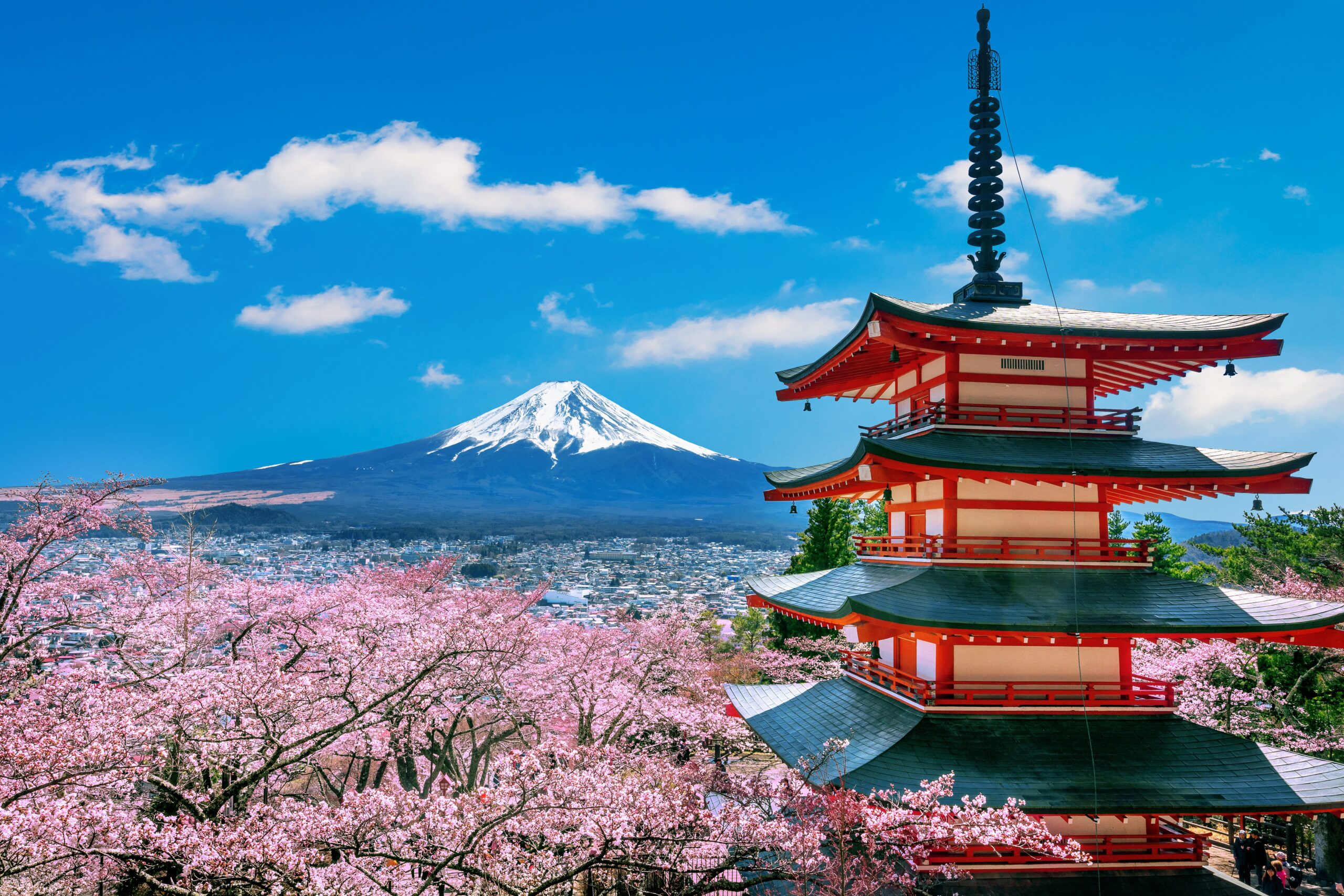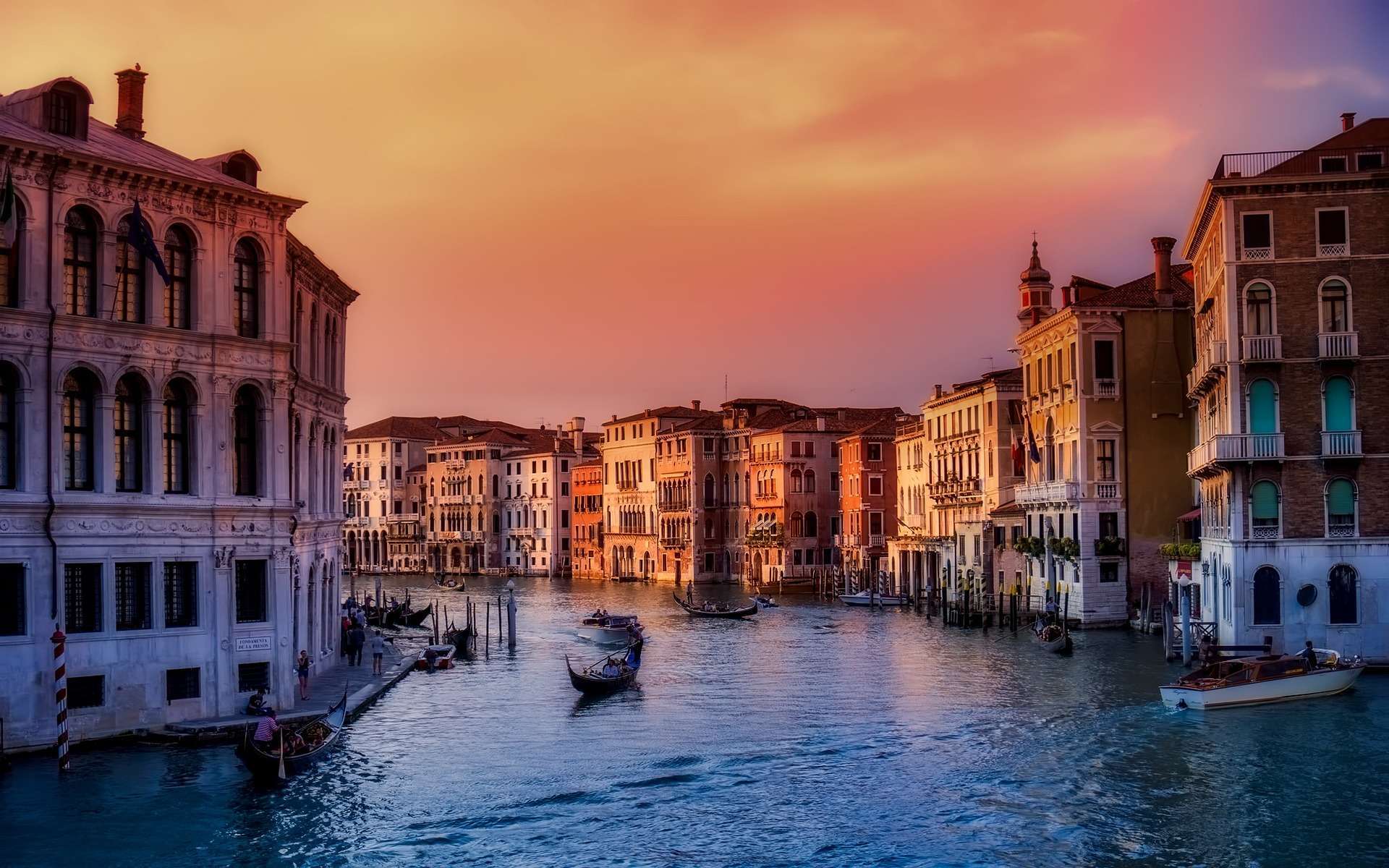Are you Looking for a list of the best national parks in Japan? Japan is a country known for its rich cultural heritage, technological advancements, and breathtaking natural beauty. Among its many wonders, Japan boasts some of the most stunning national parks in the world. From serene landscapes to majestic mountains, these national parks offer a unique glimpse into the country’s diverse and awe-inspiring beauty. In this article, we will take a journey through the six most stunning national parks in Japan, each offering a distinct and unforgettable experience.
Here is a list of the top 6 stunning national parks in Japan
- Fuji-Hakone-Izu National Park
- Nikko National Park
- Shiretoko National Park
- Daisetsuzan National Park
- Akan-Mashu National Park
- Towada-Hachimantai National Park
Introduction
Japan’s national parks are a treasure trove of natural wonders, offering visitors a chance to escape the hustle and bustle of city life and immerse themselves in serene and untouched landscapes. These protected areas are carefully preserved to maintain their ecological balance and offer a wide range of outdoor activities for nature enthusiasts and adventure seekers alike.
1. Fuji-Hakone-Izu National Park
Japan is a land of wonders, where ancient traditions blend seamlessly with modern innovation. Among its many treasures, the Fuji-Hakone-Izu National Park stands out as a natural masterpiece that captivates millions of visitors every year. Fuji-Hakone-Izu National Park is one of the most stunning Japan National parks. This enchanting national park, located just a few hours away from Tokyo, offers a breathtaking combination of majestic Mount Fuji, serene lakes, and rejuvenating hot springs. Let’s embark on a journey to explore the wonders of the Fuji-Hakone-Izu National Park and discover why it holds a special place in the hearts of locals and tourists alike.

Embracing the Iconic Mount Fuji
At the heart of the Fuji-Hakone-Izu National Park stands Japan’s most revered and iconic mountain, Mount Fuji. Towering at 3,776 meters (12,389 feet), this majestic peak is a UNESCO World Heritage Site and an enduring symbol of the nation’s cultural heritage. Each year, countless hikers challenge themselves to conquer its summit, seeking a spiritual experience and an unmatched view of the sunrise from the top.
Exploring the Five Lakes Region
Nestled at the northern base of Mount Fuji lies the tranquil Five Lakes region. These five pristine lakes—Kawaguchi, Yamanaka, Sai, Shoji, and Motosu—reflect the mountain’s majestic beauty, creating a picturesque scene that attracts photographers and nature lovers worldwide. The lakes provide a serene backdrop for leisurely walks, boat cruises, and kayaking, allowing visitors to immerse themselves in the natural splendor.
2. Nikko National Park
Located in Tochigi Prefecture, Nikko National Park is a captivating blend of cultural heritage and natural beauty. The park is home to the famous Toshogu Shrine, a UNESCO World Heritage Site adorned with intricate carvings and vibrant colors. Beyond the cultural attractions, Nikko National Park offers mesmerizing landscapes, including waterfalls, lakes, and hot springs. The rich autumn foliage attracts photographers and nature enthusiasts worldwide, making it a must-visit destination during the fall season.

Toshogu Shrine: A UNESCO World Heritage Site
The centerpiece of Nikko National Park is the renowned Toshogu Shrine, a masterpiece of architectural brilliance and intricate craftsmanship. Designated as a UNESCO World Heritage Site, this shrine is dedicated to Tokugawa Ieyasu, the founder of the Tokugawa Shogunate. As you wander through the elaborately decorated buildings, you’ll encounter the famous “Three Wise Monkeys” carving, symbolizing the principle “see no evil, hear no evil, speak no evil.” The Toshogu Shrine stands as a testament to Japan’s rich cultural heritage and is a photographer’s delight.
Kegon Falls: Nature’s Majestic Beauty
A short distance from the shrine lies Kegon Falls, one of Japan’s most stunning waterfalls. Plummeting from a height of 97 meters (318 feet), the water cascades gracefully amidst the vibrant greenery, creating a mesmerizing spectacle. The best time to visit Kegon Falls is during autumn when the surrounding trees don their vivid hues, making it a photographer’s paradise.
Lake Chuzenji: A Serene Oasis
Lake Chuzenji, formed by a volcanic eruption approximately 20,000 years ago, is a tranquil oasis nestled in the mountains of Nikko. Surrounded by lush forests and the sacred peaks of Mount Nantai, the lake offers a serene escape from the bustling city life. Visitors can take a leisurely boat ride on the lake, stroll along the lakeshore, or relax in lakeside cafes while soaking in the picturesque views.
3. Shiretoko National Park
Nestled in the northeastern corner of Hokkaido, Shiretoko National Park stands as a testament to Japan’s untamed wilderness and raw natural beauty. Designated as a UNESCO World Heritage Site, this remote and rugged paradise offers visitors a unique opportunity to immerse themselves in one of the country’s most pristine and ecologically diverse regions. From snow-capped peaks to serene lakes, Shiretoko presents a mesmerizing landscape that captivates the hearts of adventurers and nature enthusiasts alike. Let’s embark on a journey to explore the wonders of Shiretoko National Park and discover what makes it an unparalleled destination.

The Majesty of Mount Rausu
At the heart of Shiretoko National Park lies the mighty Mount Rausu, the highest peak on the Shiretoko Peninsula. Towering at 1,660 meters (5,446 feet), this majestic mountain offers a challenging yet rewarding trek for seasoned hikers. The summit rewards those who conquer it with breathtaking panoramic views of the Sea of Okhotsk and the vast expanse of the park below. As you ascend, you may encounter various wildlife, including the elusive Ezo deer and brown bears, adding to the thrill of the journey.
Shiretoko Five Lakes: Mirror-Like Serenity
A highlight of Shiretoko National Park is the tranquil Shiretoko Five Lakes, a series of interconnected ponds reflecting the surrounding landscape like mirrors. This serene setting is a haven for migratory birds and other wildlife. Strolling along the well-maintained wooden boardwalks, visitors can immerse themselves in the peaceful ambiance while marveling at the beauty of the lakes and the towering peaks that encircle them.
Shiretoko Peninsula’s Untamed Coastline
The Shiretoko Peninsula boasts a rugged coastline that remains untouched by human development. The Sea of Okhotsk crashes against dramatic cliffs, creating a picturesque scene of wild beauty. One of the best ways to experience this untamed coastline is by taking a boat tour that navigates through the sea’s icy waters. These tours offer a chance to witness majestic waterfalls, sea eagles soaring overhead, and the elusive Steller’s sea eagle perched on rocks, making it a true wildlife spectacle.
4. Daisetsuzan National Park
Nestled in the heart of Hokkaido, Japan’s northernmost island, Daisetsuzan National Park unfolds as a majestic alpine wonderland. With its rugged mountain ranges, vast meadows adorned with alpine flowers, and therapeutic hot springs, this national park offers an unforgettable escape into nature’s embrace. As the largest national park in Japan, Daisetsuzan beckons adventure seekers, hikers, and nature enthusiasts with its breathtaking landscapes and abundant wildlife. Let’s embark on a journey to explore the wonders of Daisetsuzan National Park and uncover the allure that makes it a cherished gem of Japan.

Asahi-dake: The Roof of Hokkaido
At the heart of Daisetsuzan stands Asahi-dake, the tallest peak in Hokkaido, rising proudly to a height of 2,291 meters (7,516 feet). Asahi-dake offers exhilarating hiking opportunities for adventurers of all skill levels. The mountain’s allure transforms with the seasons—blanketed in vibrant wildflowers during the warmer months and draped in glistening snow during winter. A ropeway takes visitors partway up the mountain, granting access to breathtaking panoramic views and a starting point for further exploration.
The Splendor of Sounkyo Gorge
Sounkyo Gorge, a picturesque gorge flanked by towering cliffs, is a gateway to the wonders of Daisetsuzan National Park. A scenic drive through this gorge offers mesmerizing views, especially during the autumn season when the foliage transforms into a tapestry of fiery reds and golden hues. In winter, the frozen waterfalls create an enchanting landscape, drawing ice climbers seeking a thrilling ascent.
5. Akan-Mashu National Park
Nestled in eastern Hokkaido, Akan-Mashu National Park unfolds as a captivating volcanic wonderland. This national park is a testament to the raw forces of nature, boasting volcanic calderas, crystal-clear lakes, and unique geological formations. Akan-Mashu beckons travelers to immerse themselves in its pristine beauty and discover the cultural heritage of the indigenous Ainu people. With its diverse landscapes and rich biodiversity, Akan-Mashu National Park offers an unforgettable journey into the heart of Japan’s untamed wilderness.

Lake Akan: A Jewel of the Park
At the heart of Akan-Mashu National Park lies the picturesque Lake Akan, a caldera lake with tranquil turquoise waters. One of the lake’s unique attractions is the “marimo,” a rare and protected algae species that forms into beautiful green spheres. Boat cruises allow visitors to witness these marimo up close and to appreciate the lake’s stunning surroundings. During winter, the “frost flowers” phenomenon—a rare occurrence where ice crystals bloom on the lake’s surface—creates an ethereal sight.
Mashu Lake: The Mystical Lake of Fog
Mashu Lake, also known as the “Foggy Lake,” is renowned for its mystical ambiance, often shrouded in thick fog that lends an air of mystery. The lake’s translucent blue waters, surrounded by steep cliffs, make it a scenic marvel. Due to its calm surface and unique geology, Mashu Lake is often considered one of the clearest lakes in the world. Visitors can enjoy panoramic views from nearby observation points while being mesmerized by the lake’s ever-changing beauty.
6. Towada-Hachimantai National Park
Spanning the prefectures of Aomori, Akita, and Iwate, Towada-Hachimantai National Park is a diverse and enchanting wonderland. The centerpiece of the park is Lake Towada, a serene caldera lake surrounded by dense forests. Visitors can explore the Oirase Gorge, a picturesque walking trail that winds along a river and showcases stunning waterfalls. Hachimantai, on the other hand, is a volcanic mountain range that transforms into a stunning autumn canvas during fall. The park offers a blend of tranquility and adventure, making it a favorite among nature lovers.

Lake Towada: The Gem of the North
Lake Towada stands as a crown jewel within the park’s boundaries, earning the title of Japan’s third-deepest lake. Its clear, sapphire waters reflect the surrounding forests and mountains, creating a mesmerizing vista. Boat cruises on the lake provide an opportunity to appreciate the tranquil beauty of the area while marveling at the seasonal splendor of cherry blossoms in spring and vibrant foliage in autumn.
Oirase Gorge: A Tranquil Paradise
Flowing from Lake Towada, the Oirase Gorge is a picturesque ravine adorned with waterfalls, moss-covered rocks, and lush vegetation. A serene walking trail follows the river’s course, allowing visitors to indulge in the soothing sounds of flowing water and the tranquil ambiance of the gorge. Each season paints the gorge with its unique charm, making it a year-round attraction for nature lovers and photographers.
Mount Hachimantai: The Volcanic Wonder
Mount Hachimantai, a dormant volcano, offers diverse landscapes that transform dramatically with the seasons. In spring and summer, alpine flowers carpet the mountain slopes, while autumn brings a breathtaking tapestry of fiery colors. During winter, Mount Hachimantai becomes a winter wonderland, drawing skiers and snowboarders to its powdery slopes. A network of hiking trails caters to adventurers seeking to explore this volcanic wonder.
Conclusion
Japan’s six most stunning national parks offer a kaleidoscope of natural wonders, cultural treasures, and captivating landscapes. Each park possesses a distinct charm, weaving together a tapestry of beauty that beckons travelers to explore and immerse themselves in the wonders of the country’s untamed wilderness.
From the iconic beauty of Mount Fuji in Fuji-Hakone-Izu National Park to the tranquil shores of Lake Towada in Towada-Hachimantai National Park, Japan’s national parks paint a vivid portrait of the nation’s diverse landscapes. These protected areas are not only a sanctuary for unique flora and fauna but also a living testament to the deep-rooted cultural heritage of the Ainu people and ancient shrines nestled amidst nature’s embrace.
The awe-inspiring volcanic wonders of Akan-Mashu National Park and the rugged wilderness of Shiretoko National Park serve as reminders of the Earth’s raw power and untamed beauty. The alpine wonderland of Daisetsuzan National Park and the harmonious blend of nature and culture in Nikko National Park evokes a sense of serenity and awe that lingers in the hearts of all who venture into their embrace.
As guardians of Japan’s ecological and cultural heritage, these national parks stand as testaments to the nation’s commitment to preserving its natural treasures. Whether wandering through lush forests, hiking rugged peaks, or basking in the tranquility of serene lakes, visitors to these parks embark on journeys that transcend the ordinary and connect them with the essence of Japan’s soul.
In every season, from the vibrant colors of autumn foliage to the ethereal drift ice phenomenon of winter, Japan’s national parks offer an ever-changing canvas of beauty that captivates the senses. These natural sanctuaries beckon adventurers, nature enthusiasts, and seekers of serenity alike, inviting them to witness the wonders of the natural world and to be humbled by its majesty.
Frequently Asked Questions
What is the most beautiful park in Japan?
Discover the captivating beauty of Fuji-Hakone-Izu National Park! Majestic Mount Fuji, serene lakes, and rejuvenating hot springs make it one of Japan’s most stunning national parks. Embark on a journey to explore its wonders just hours away from Tokyo. Experience the magic that enchants millions of visitors each year and find out why it holds a special place in the hearts of locals and tourists alike.
What is the most famous park in Japan?
Fuji-Hakone-Izu National Park is renowned for its stunning natural beauty, and it holds a special place in the hearts of locals and tourists alike. It encompasses a wide range of landscapes, including the majestic Mount Fuji, the picturesque Hakone area with its hot springs and scenic views, and the Izu Peninsula with its rugged coastlines and sandy beaches. Mount Fuji, the highest peak in Japan, is an iconic symbol of the country and attracts millions of visitors every year who come to climb it or simply admire its beauty from afar.



